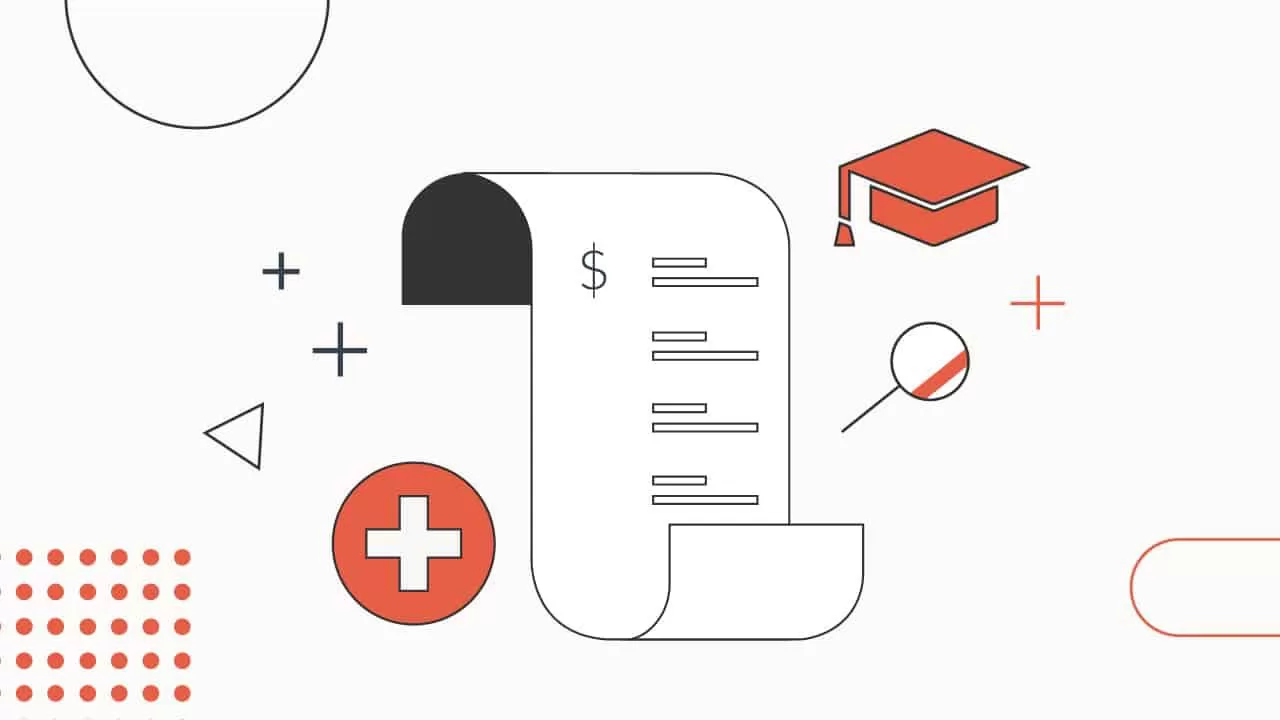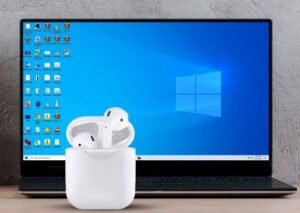Student loan forgiveness applications can be confusing. This guide simplifies the process and provides the essential information needed to navigate it successfully.
Student loan forgiveness provides a way to lessen the burden for borrowers overwhelmed by their loans. However, applying for student loan forgiveness can be an intimidating process. With multiple programs and a plethora of requirements, the application process can be confusing and leave the borrower feeling frustrated and overwhelmed.
Understanding the guidelines and qualifications can be challenging, especially when it comes to the different programs, but with this guide, borrowers can learn about the essential information necessary to navigate the application process accurately and efficiently. This article will provide a step-by-step guide and essential information about student loan forgiveness, answering key questions regarding eligibility, qualification, and the application process.

Credit: www.cnbc.com
Understanding Student Loan Forgiveness Programs
Student loan forgiveness can provide a huge relief to students struggling with student debt. However, the process for applying can be complicated and confusing. Understanding student loan forgiveness programs is crucial to navigate the process successfully. We will explain the different types of student loan forgiveness programs, common misconceptions, and key points to consider when applying.
Explaining Student Loan Forgiveness
Student loan forgiveness is the cancellation of all or a portion of your student loan debt. Forgiveness can be granted after a specific number of payments, years of service, or meeting specific criteria. The process for applying and qualifying for loan forgiveness can vary based on the type of loan forgiveness program.
Different Types Of Student Loan Forgiveness Programs
There are several types of student loan forgiveness programs, including:
- Public service loan forgiveness (pslf) program: Forgives the remaining balance on direct loans after making 120 qualifying monthly payments while working full-time for a qualifying employer.
- Teacher loan forgiveness program: Provides up to $17,500 in forgiveness for direct or ffel subsidized or unsubsidized loans after 5 complete and consecutive academic years of teaching in a low-income school or educational service agency.
- Perkins loan cancellation and discharge: Cancels a percentage of the perkins loan for teachers, firefighters, law enforcement officers, nurses, and medical technicians.
- Military service loan forgiveness: Provides forgiveness of outstanding federal student loans for members of the armed forces.
- Income-driven repayment (idr) plans: Depending on the idr plan, the remaining balance of the loan may be forgiven after 20 to 25 years of qualifying payments.
Misconceptions About Student Loan Forgiveness Programs
There are several misconceptions about student loan forgiveness programs that can be misleading. Here are a few misconceptions you should consider:
- All loans are eligible for forgiveness: Only certain types of federal student loans qualify for loan forgiveness.
- Loan forgiveness is automatic: Applying for loan forgiveness is not automatic; you must submit an application to be considered for forgiveness.
- Loan forgiveness is immediate: The process of qualifying, applying, and granting forgiveness can take several years.
- Tax implications of student loan forgiveness: Forgiveness may be considered income for tax purposes.
Understanding student loan forgiveness programs is essential for anyone navigating the process of applying for loan forgiveness. Consider your options, eligibility, and the requirements for each program before starting an application. Work closely with your loan servicer and seek professional advice to ensure you make informed decisions.
Qualifying For Student Loan Forgiveness Programs
The thought of having student loans forgiven can be a huge relief for many borrowers. However, the road to student loan forgiveness is often confusing and difficult to navigate. To help you out, we’ve created this ultimate guide to navigating student loan forgiveness applications.
We will focus on the first subheading: qualifying for student loan forgiveness programs.
Basic Eligibility Requirements
Before diving into the details specific to each type of student loan forgiveness program, there are some general requirements you need to meet in order to be eligible for any program:
- You must have federal student loans. Private loans are not eligible for forgiveness programs.
- You must have made qualifying payments on your loans. Qualifying payments generally refer to payments made under a qualifying repayment plan such as income-driven repayment (idr) or the standard repayment plan.
- You must be working in a qualifying field or for a qualifying employer.
- Your loans must be in good standing.
Specific Requirements For Different Types Of Student Loan Forgiveness Programs
The key to qualifying for different student loan forgiveness programs is to understand their specific requirements. Here are some of the most popular programs and their eligibility requirements:
- Public service loan forgiveness (pslf): This program is for borrowers who work full-time for a qualifying government or nonprofit organization. To qualify you must make 120 qualifying payments (over 10 years) while working for a qualifying employer. You must also be enrolled in an eligible idr plan and your loans cannot be in default.
- Teacher loan forgiveness: This program is for teachers who work full-time in low-income schools or educational service agencies. To qualify, you must have been teaching for five consecutive years in a qualifying school. The amount of forgiveness depends on the subject you teach and the loan amount you borrowed.
- Perkins loan cancellation: This program is for borrowers who have perkins loans. To qualify, you must work in a qualifying job (such as a teacher, nurse, or law enforcement officer) for a certain period of time. The amount of forgiveness depends on your job and the length of your service.
Tips To Increase The Chances Of Qualifying
Here are some tips to help you increase your chances of qualifying for student loan forgiveness programs:
- Keep track of your payments and employment history. It’s important to keep track of your payments and your employment history to ensure eligibility for forgiveness programs.
- Learn about already-serving special programs options. Some programs forgive a portion of your student loans just for serving in a qualifying job or field.
- Stay in good standing. Make sure you stay current on your payments and keep your loans in good standing.
- Apply early and often. Apply for any programs you think you may qualify for and do so as early as possible. Some programs have limited funding.
Navigating student loan forgiveness programs can be tough, but with the right information and careful planning, you can get on the road to forgiveness and financial freedom.
How To Apply For Student Loan Forgiveness Programs
Applying for student loan forgiveness programs can be a daunting and overwhelming process, but it doesn’t have to be. With the right information and preparation, you can successfully navigate the application process and get the debt relief you need. Below are some key points to consider when applying for student loan forgiveness programs:
What Documents Are Required
Before you start the application process, make sure you have all the necessary documents on hand. These might include:
- Personal identification documents like your driver’s license or passport
- Employment verification documents, such as pay stubs or w-2 forms
- Federal tax returns for the past few years
- Loan statements or records that show your outstanding balance and payment history
- Proof of enrollment or completion of an eligible program or school
Make sure to double-check the specific requirements for the student loan forgiveness program you are applying for, as they may vary.
The Importance Of Submitting A Complete Application
Submitting a complete and accurate application is crucial to the success of your student loan forgiveness application. Omitting any necessary information or documents could result in delays or even rejection of your application. To make sure you have all the information you need, consider working with a student loan counselor or financial advisor who can guide you through the application process.
Deadline Considerations
It’s important to pay close attention to application deadlines for student loan forgiveness programs. Missing a deadline could mean having to wait until the next application cycle, or worse, missing out on forgiveness altogether. Make sure to mark your calendar with application deadlines and start the process early to ensure plenty of time to gather all necessary documentation.
Remember, applying for student loan forgiveness can be a complex and time-consuming process, but it’s worth the effort. With the help of a professional and careful attention to detail, you can successfully navigate the process and get the relief you need.
Common Mistakes To Avoid When Applying For Student Loan Forgiveness Programs
As you navigate the process of applying for student loan forgiveness programs, it’s essential to steer clear of common mistakes that could delay or even derail your application. Here are some key mistakes to avoid:
Failing To Submit All Required Documents
Submitting incomplete documents or failing to include all required paperwork is one of the most significant mistakes that individuals make when applying for student loan forgiveness programs. Incomplete applications can delay the review process or lead to an outright denial.
Be sure to double-check each application’s requirements and ensure you have included all necessary documents before submission.
Bullet points:
- Review the application requirements thoroughly
- Double-check each document before submission
- Make sure you have included all required paperwork
Missing Deadlines Or Submitting Incomplete Applications
Another critical mistake people make when applying for student loan forgiveness is missing the deadlines or submitting incomplete applications. Missing deadlines can lead to delays or even rejection. Incomplete applications can also be seen as noncompliant, leading to rejection. Make sure to pay attention to all deadlines and submit complete applications before the deadline expires.
Bullet points:
- Always pay attention to deadlines
- Submit complete applications on time
- Don’t delay submitting your application until the last minute
Misunderstanding Eligibility Requirements
Misunderstanding the eligibility requirements of different student loan forgiveness programs is another critical mistake people make, and it can lead to disappointment and wasted time and effort. Before applying, make sure to read and understand the program’s eligibility requirements thoroughly.
If you have questions, seek out clarifications from the program’s administrator before submitting your application.
Bullet points:
- Understand different program’s eligibility requirements
- Read eligibility requirements carefully
- Seek clarifications if you have questions
By avoiding these common mistakes, you can increase your chances of successfully navigating the student loan forgiveness application process. Double-check your work, pay attention to deadlines, and read and understand all eligibility requirements to ensure a smooth and successful application process.
Tips For Staying On Track With Student Loan Forgiveness Programs
Student loan forgiveness programs can be a great relief for borrowers who have accumulated a significant amount of student loan debt. However, navigating through the application process can be an overwhelming task. Fortunately, there are ways to stay on track and make the process easier.
Here are some essential tips for staying on top of student loan forgiveness programs:
Keeping Track Of Deadlines
Missing deadlines can lead to missed opportunities, and student loan forgiveness programs are no exception. Be sure to keep track of the following deadlines:
- Application deadlines: Every program has unique application deadlines; make sure you are aware of each program’s deadline.
- Recertification deadlines: Certain programs require an annual recertification; failure to recertify on time could lead to disqualification from the program.
Keeping Track Of Payments And Progress
Keeping track of payments is critical for making sure you meet the requirements to qualify for forgiveness. Here are some key points to remember:
- Timeframe: Keep track of the number of years you have been making payments. Some programs require a certain number of years of repayment to qualify for forgiveness.
- Payment plan: Ensure you enroll in the correct repayment plan that meets the program’s requirements.
- Qualifying payments: Be aware of what constitutes a qualifying payment for the program you are enrolled in.
Avoiding Common Mistakes
When it comes to student loan forgiveness programs, mistakes can be costly. Here are some common mistakes that borrowers make:
- Missing or incorrect information on applications: Make sure all information is accurate and complete when submitting an application.
- Failure to recertify: As previously mentioned, programs like income-driven repayment plans require annual recertification. Forgetting to recertify on time will result in disqualification from the program.
- Failing to make payments: It’s essential to make the required payments in full, and on time. Failure to do so could result in disqualification from the program.
To ensure your application is successful, avoid these mistakes.
Student loan forgiveness programs can be a great way to reduce student loan debt. However, it’s crucial to stay on top of deadlines, payments, and avoid mistakes. By following these tips, you will have a better chance of success when applying for student loan forgiveness programs.
Frequently Asked Questions On The Ultimate Guide To Navigating Student Loan Forgiveness Applications
What Is Student Loan Forgiveness?
Student loan forgiveness is a government program designed to relieve borrowers of their outstanding student debt.
Who Is Eligible For Student Loan Forgiveness?
Eligibility for student loan forgiveness depends on the type of loan, repayment plan and employment status.
What Types Of Loans Can Be Forgiven?
Federal student loans, such as direct and stafford loans, are eligible for forgiveness. Private loans are not eligible.
How Can I Apply For Student Loan Forgiveness?
To apply for student loan forgiveness, borrowers need to submit an application to their loan servicer or the department of education.
What Happens If My Forgiveness Application Is Denied?
If your forgiveness application is denied, you may be able to appeal the decision or explore other repayment options.
How Long Does It Take To Receive Student Loan Forgiveness?
The time it takes to receive student loan forgiveness varies based on the forgiveness program and individual circumstances. It can take several months to several years.
Conclusion
Navigating the complex and ever-changing student loan forgiveness landscape can be daunting, but with the right tools and resources, it’s possible to achieve financial freedom and peace of mind. By understanding the intricacies of loan forgiveness programs, identifying which options may work best for your unique situation, and taking necessary steps to stay on top of requirements and deadlines, you can move towards a brighter financial future.
Remember to thoroughly research all available options, be patient, and stay informed about any updates or changes to the rules and regulations governing student loan forgiveness programs. With dedication and perseverance, you can navigate the student loan forgiveness process and achieve the debt-free life you deserve.
Don’t let the process defeat you; use this ultimate guide as a starting point, and take control of your financial future today.




GIPHY App Key not set. Please check settings